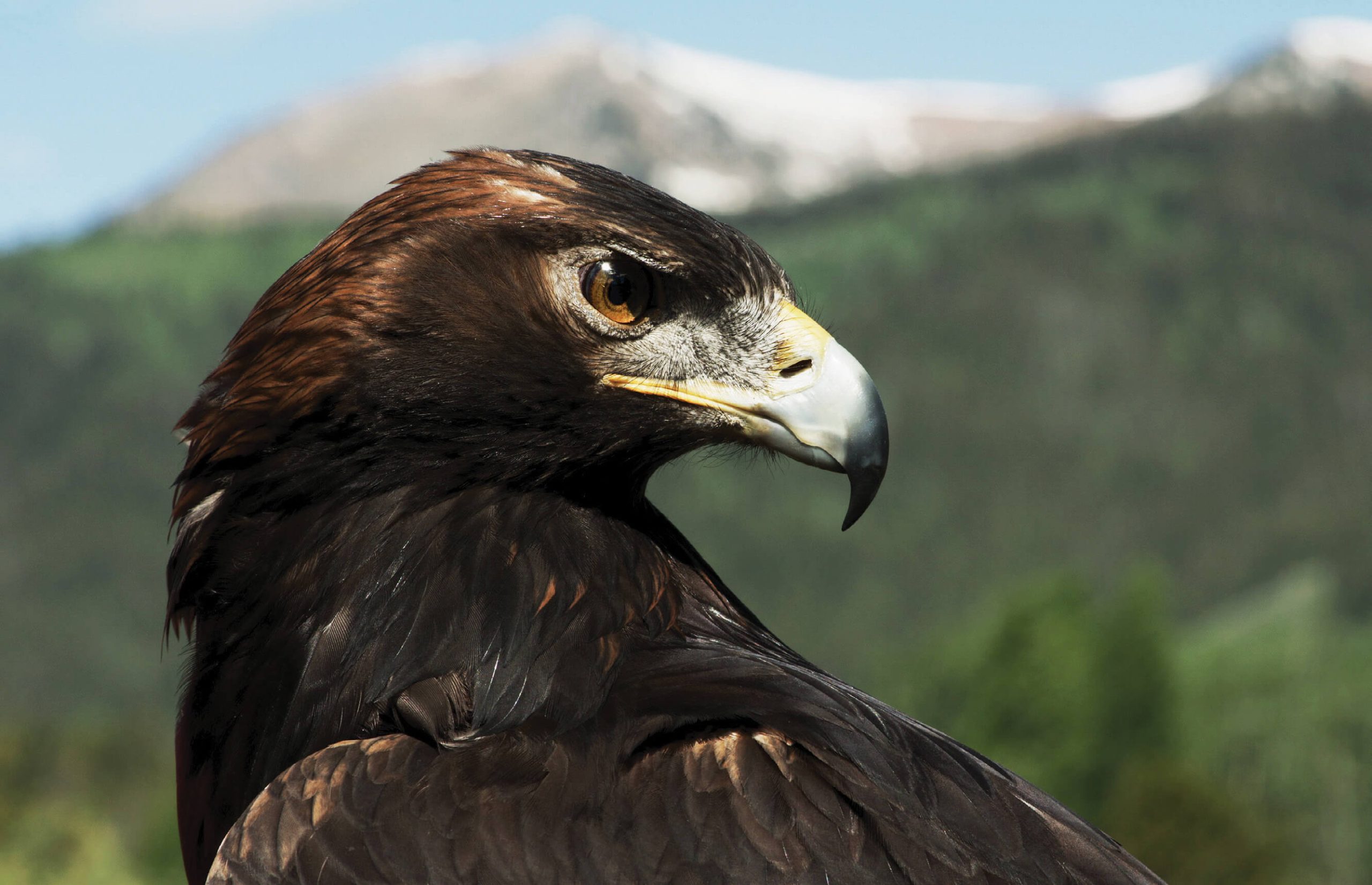
01 Jun Encounters with Golden Eagles
As a conservation filmmaker, I often travel to remote and unfamiliar places, but few have surprised and challenged me more than Wyoming’s Bighorn Basin. In 2021, I found myself there filming my first feature documentary, Golden Eagles: Witnesses to a Changing West, with conservation ecologist Charles Preston, who directs a long-term monitoring and research program on golden eagle nesting ecology in the Bighorn Basin along the eastern margin of the Greater Yellowstone Ecosystem. The eagles are a species of serious conservation concern, facing challenges like lead poisoning, sprawl, poaching, electrocution, and collisions.
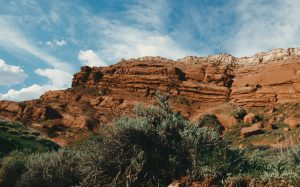
The beautifully diverse sagebrush steppe landscape, the golden eagle’s realm in Wyoming’s Bighorn Basin, was the backdrop for Golden Eagles: Witnesses to a Changing West. Photographed by WILD EXCELLENCE FILMS/DAVID ROHM
Since childhood, I have been fascinated with eagles and the Indigenous people that revere them. In planning our film, we knew we needed to cast someone to teach our audience about the special relationship Indigenous people have with golden eagles. We were so lucky to find Shane Doyle, a Montana native, scholar, teacher, and community advocate whose work focuses on the history and heritage of Native American tribes of the Northern Great Plains. Doyle is an enrolled member of the Apsáalooke Nation (also known as the Crow Tribe) and holds a doctorate in philosophy from Montana State University. He grew up in Crow Agency and has built his career around making Native American history a cultural mainstay in everything from Montana’s educational system to governmental land management decisions.
“Time to go to work,” I told myself as I stepped out of the white pickup truck and peered over the edge of a steep 80-foot ridge into the darkness. It wasn’t so much a pep talk but a simple mantra, an affirmation of something I had to do that I hadn’t done before — an inherently scary task of the new and unknown.
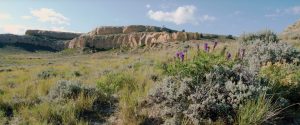
Photographed by WILD EXCELLENCE FILMS/DAVID ROHM
I stared deep into the dark for any sign of movement, sharpening my hearing for the slightest rustle or scrape on the ground. The tall sagebrush stood outlined against a quickly rising sun, hiding all sorts of terrifying creatures, like the mountain lions and grizzly bears for which Wyoming is well known, just waiting to ambush me as I stumbled through the sagebrush maze to my target below. I took a few deep breaths, refocused for a moment, laughed at my beyond-silly, vivid imagination, and realized, after all, I was truly alone.
Just about the time I felt relaxed and confident, something really scary hit me: the heat. It was barely 5:30 a.m., and the temperature read 85 degrees — in Wyoming — in late May.
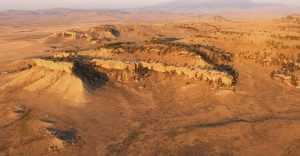
This aerial offers a bird’s-eye view of an active eagle nest on a huge ranch in Wyoming that was recently owned by a prominent Hollywood musician. Photographed by RICHARD JONES
The day before, Preston told me I’d have 35 minutes on site. By the tone of his voice, I knew the world-renowned founding curator of the Draper Natural History Museum at the Buffalo Bill Center of the West in Cody, Wyoming had built in no margin for error or flexibility in his directive. I was fortunate to be a part of his study team and witness his work and experiences.
I had replayed the upcoming sequence of my journey over and over again the night before, even into my dreams. Make your way down the loose rocky ridge, over the sandy gravel flats, down into the dry gulch, and up the other side. Head for the right side of the 12-foot-high boulder and stay low. Do not call attention to yourself. Be aware: This is prime rattlesnake country, and they love rocks. A large skunk that I saw a couple of days ago while scouting my route through binoculars lives under that boulder. Pass the boulder on your right, climb onto the layered sandstone shelf, and walk up the narrow path carved into the cliff face.
I clawed my way up the face, losing traction, and leapt for a rectangular boulder wedged halfway into the earth, a few feet below my target. I grabbed onto it. It moved and wobbled slightly. I pulled myself up until I was face to face with a pair of beautiful, white, fuzzy, three-week-old golden eagle chicks. I quickly set my small remote cameras on the far edge of the 6-foot nest built mostly out of dry sagebrush stems. The young birds were a little excited, but I had expected more of a reaction. They were inquisitive and curious. Then, I disappeared from sight. I forgot to climb, I guess, sliding all the way back down the cliff on my backside.
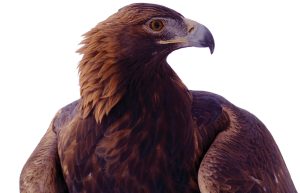
Though comparable in size, weight, and wingspan, golden eagles have a smaller and darker bill than their bald cousins. Photographed by WILD EXCELLENCE FILMS/DAVID ROHM
The sun was much brighter, hotter, and higher now. I gathered my 25-pound backpack and aluminum ladder. (I carried a 6-foot ladder with me in case I had to use it to reach the shelf below the nest.) I was at a dead run now — ladder and pack in hand — past the skunk boulder, through the gulch, across the dry sandy flats, and up the steep ridge to my truck. I had to pause midway to catch my breath in the 7,000-foot altitude.
As I walked through the rocks and sagebrush, I had a brief moment to reflect on why I was here. Preston graciously allowed us to join his research team for a few weeks and document his critical scientific work with golden eagles. I thought about my wonderful wife, Melissa — my life partner and a skilled filmmaker who would join me in a few days — and missed her. I thought about the Native people that came here before me, living a sacred way of life in this beautiful but sometimes unforgiving landscape. I thought about the transcendent intersection of ancient ways and modern science that this trip fostered. I thought about my new friend, Doyle, a descendant of a historically impressive nation of warriors, educators, and leaders. Doyle was to be our lead Apsáalooke on-screen talent for this project. I was excited to meet him and learn more about the spiritual, cultural, and medicinal connections between golden eagles and his people.
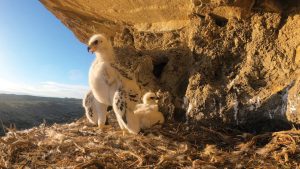
Rohm’s adventure began with this active eagle nest in conservation ecologist Charles Preston’s study area; the two eagle chicks inspired this article. Photographed by WILD EXCELLENCE FILMS/DAVID ROHM
I pushed my way to the top of the ridge, soaked with sweat and exhausted. My hands shaking from a rush of adrenaline, I opened the door to the truck and collapsed into the soft seats. Checking the time, I realized that the entire sequence had taken only 7 minutes. I waited inside the sunlit cab. In 20 minutes, I would retrace my steps to the nest and retrieve my remote cameras. Then, I would be off to meet Doyle.
Since that 7-minute sequence, Golden Eagles: Witnesses to a Changing West by Wild Excellence Films has aired more than 700 times on over 74 PBS stations nationwide.




No Comments